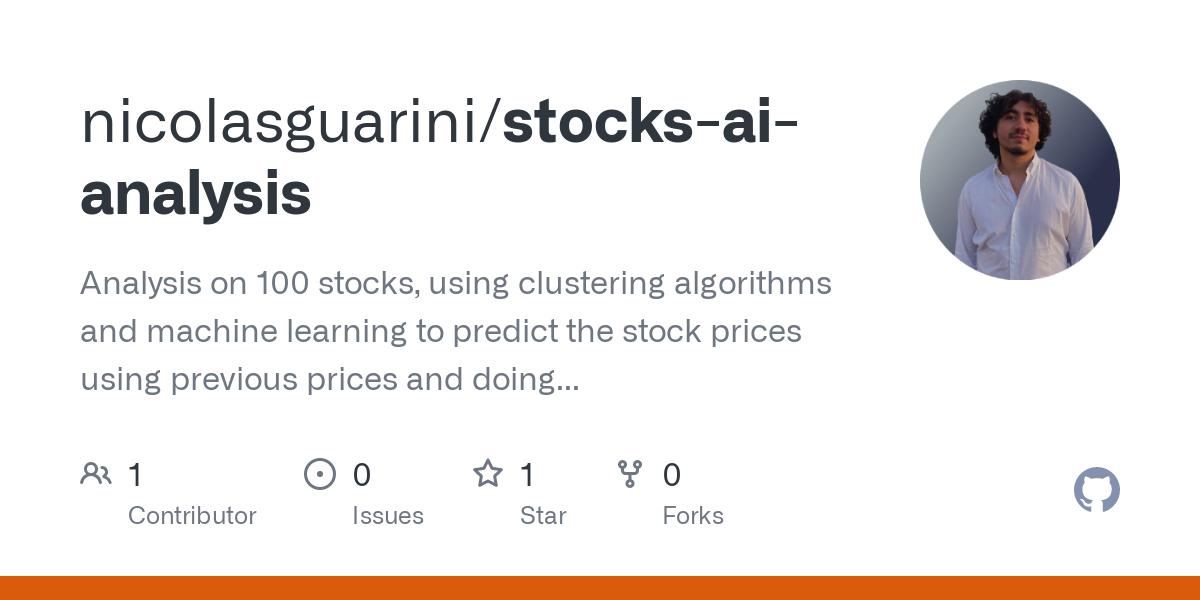Integrity and compatibility are two of the primary elements to be considered when evaluating AI software for stock forecasting and analyzing trading platforms. An integrated platform that is seamless with your current tools, systems, and workflows will greatly improve efficiency and productivity. Here are 10 tips to help you evaluate the compatibility and integration between these platforms.
1. Check Brokerage Integration
Check that your platform works seamlessly with the brokerage or trading service you prefer.
Trade Execution: Verify whether the platform permits direct trade execution through the broker integrated.
Account synchronization: Verify that the platform is able to update in real-time accounts, balances and positions as well as transaction histories.
2. Examine API Availability
API access: Ensure the platform provides an API (Application Programming Interface) for developers to build customized tools or to automate workflows.
API documentation: See if the API is well-documented with explicit examples and cases of use.
Rate limits: Check if there are reasonable rates for the API and if it can accommodate the anticipated volume of usage.
3. Review the Third-Party Integration
Popular Tools: Ensure that the platform has integrations with other applications, like Google Sheets and Excel.
Data import/export: Make sure the platform allows easy export/import data from and into other tools.
Extensions/Plugins: Verify the platform's support for extensions and plugins to add additional functionality.
4. Test Compatibility for Operating Systems
Desktop compatibility: Ensure that the device is compatible with your operating system of choice (Windows, macOS or Linux).
Mobile compatibility: Determine if there is a mobile app available for iOS or Android.
Access via the internet (for greater flexibility): Verify that the platform is accessible via a webbrowser.
5. Assessment of the Data Integration Capabilities
Data sources. Make sure the platform supports numerous data integrations (e.g. data providers for social media, market sentiment, news feeds).
Real-time feeds of data Verify that the platform allows for real-time integration of data to give the most current analysis.
Historical data import - Check that the platform allows you to integrate historical data into your backtesting or analytical software.
6. Assess Cloud and On-Premise Compatibility
Cloud-based platforms: Make sure the platform is accessible from anywhere connected to the internet.
On-premises deployment: Make sure you know the platform you're using allows deployment on premises.
Hybrid models: Check whether the cloud-based platform integrates and on premise capabilities.
7. Check for Cross Platform Syncronization
Device synchronization: Ensure that your platform is synchronized to sync settings and information across all devices (desktops and mobiles).
Real-time updates: Verify if the changes made to one device reflect immediately on the other.
Check the platform to see whether it allows data or functionality access even offline.
8. Evaluation of compatibility with trading strategies
Automated or algorithmic trading: Verify that the platform for trading is compatible with these strategies.
Custom indicators: Check if your platform allows the use of indicators or scripts which are exclusive to you.
Backtesting strategies: Find out whether the platform is capable of back-testing trading strategies using historic data.
9. Review Security and Compliance
Data encryption: Make sure the platform uses encryption for data during transit and in rest.
Authentication Verify whether the platform supports secure methods of authentication (e.g. Two-factor authentication).
Regulative compliance: Make sure that the platform is in compliance with relevant regulations.
10. Test Scalability Performance
Scalability: The platform must be able to handle growing user numbers and data volumes.
Performance under load - Check that the platform is able to continue responding in conditions of high market volatility.
Utilization of resources: Make sure that the system is using resources efficiently (CPUs, memory, bandwidth).
Bonus Tips
User feedback: Look for reviews and comments from users in evaluating the platform.
Trial period: Use the trial period for free or demo to test the platform's integration with your existing tools and workflows.
Customer Support: The platform needs to provide solid support in the event of integration problems.
Check these suggestions to determine the integration and compatibility between AI stock predicting/analyzing platforms and your existing trading systems, and make sure they improve your trading effectiveness. Have a look at the top great site for ai options trading for website recommendations including trading with ai, ai copyright trading bot, ai investing, ai trader, best ai for trading, ai stock picker, ai stock price prediction, ai stocks, free ai trading bot, stock market software and more.

Top 10 Tips For Assessing The Regulatory Compliance Of Ai Stock Predicting/Analysing Trading Platforms
The compliance with regulatory requirements of trading platforms using AI to predict/analyze the price of stocks is a significant element. Compliance can help ensure that the platform operates within legal frameworks and protecting personal data of the users. These are the top ten tips for assessing regulatory compliance.
1. Verify the licensing and registration
Regulatory bodies: Ensure the platform is registered and regulated by the appropriate financial regulatory authorities (e.g., SEC in the U.S., FCA in the UK, ASIC in Australia).
Verify that brokers who are integrated into the platform are licensed and licensed and.
Public records: You can check the official website of the regulatory body to find out if the platform is registered and whether there have had any violations over the years.
2. Compliance with Data Privacy Assessment
GDPR - If your site operates within the EU and/or provides services to users in the EU make sure it complies with GDPR.
CCPA For Californian users Check compliance with California Consumer Privacy Act.
Data handling policies: Read the platform's data privacy policy to determine the ways in which user data is gathered and stored. It also outlines how data is transferred.
3. Examining Anti-Money-Laundering/AML Measures
AML Policies The platform must have solid AML (Anti-Money Laundering) policies to detect money laundering and stop it.
KYC procedures. See whether your platform is following Know Your Customer processes for verifying user identity.
Transparency monitoring You can find out if the platform is monitoring all transactions for suspicious activities and notifies the authorities.
4. Verify the compliance of Trading Regulations
Market manipulation: Ensure that the platform has measures in place to prevent any market manipulation, such as spoofing trading and wash trading.
Types of orders. Check to see whether your platform meets the rules for orders.
Best execution: Make sure your platform is following the most efficient execution practices. This will ensure that trades are carried out at the most competitive price.
5. Examine Cybersecurity Compliance
Data encryption: Make sure that the platform safeguards the user's data while it is during its travel and also when it's in storage with encryption.
Response to incidents. Verify whether the platform has a strategy of action to handle cyberattacks and data breaches.
Certifications: Find out if a platform is certified to be secure (e.g. ISO 27001, SOC 2)
6. Transparency Evaluation and Disclosure
Fee disclosure: Make sure the platform clearly discloses any fees, any hidden or additional charges.
Risk disclosure: Make sure the platform has disclosed all risks, especially if you are using high-risk strategies or trading using leverage.
Performance reporting: Ensure the platform provides transparent and accurate performance data for its AI model.
7. Make sure you're in compliance with International Regulations
Transparency in trading across borders If you're trading internationally, be sure the platform is compliant with all regulations.
Tax reporting: Check the platform's tools or reports to allow users to adhere to tax laws.
Compliance with sanctions: Ensure that the platform complies with international sanctions and is not allowing trading with prohibited entities or countries.
8. Reviewing Audit trail trails and Record-Keeping
Transaction records: Make sure the platform records detailed details of each transaction for reasons of auditing and regulatory purposes.
Logs of activity for users: Determine if the platform logs user activity, including trading, logins, as well as changes to account settings.
Audit readiness: Ensure that the platform is able to provide all documents and logs in the event of a regulatory audit occurs.
9. Evaluation of Compliance AI Specific Regulations
Algorithmic trading rules: If your trading platform uses algorithms, ensure that it is in compliance with the rules of MiFID II for Europe or Reg. SCI for the U.S.
Fairness and bias: Determine whether the platform is able to monitor and reduces biases in its AI models to ensure fair and ethical trading.
Explainability: Some laws require that platforms give explanations for AI-driven predictions or choices.
10. Review feedback from users and regulatory history
Feedback from users: Read user reviews to assess the reputation of the platform for compliance with regulations.
History of regulatory violations - Check to find out if the platform is associated with any prior penalties or violations of regulations.
Third-party inspections: Check if the platform is subject to regular third-party inspections to ensure that the platform is in compliance.
Bonus Tips
Legal consultation: You may want to consult an expert in law to assess the platform's compliance with pertinent regulations.
Trial period: Take advantage of a no-cost demo or trial to assess the compliance features available on the platform.
Customer support: Ensure the platform provides support for compliance-related questions or concerns.
The following tips can assist you assess the compliance with regulations for an AI stock-predicting/analyzing trading platform. You can choose a system that complies with the legal frameworks and safeguards your interests. Compliance not just reduces the legal risk but also improves confidence in the platform's services. Have a look at the top getstocks ai tips for more tips including ai trading bot, ai stocks, best ai stock trading bot free, ai stock market, coincheckup, incite, investment ai, stock analysis websites, free ai trading bot, invest ai and more.
